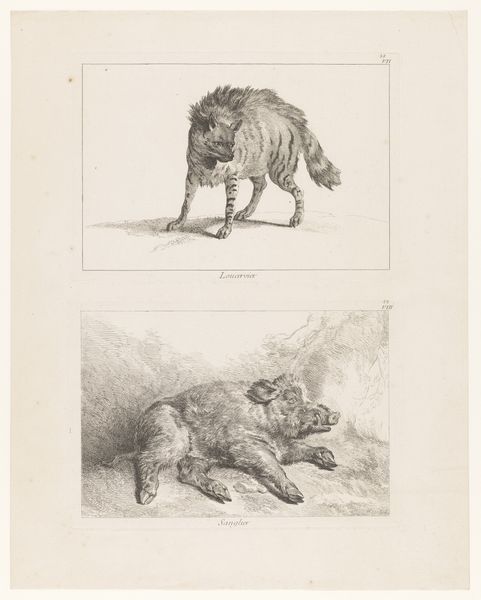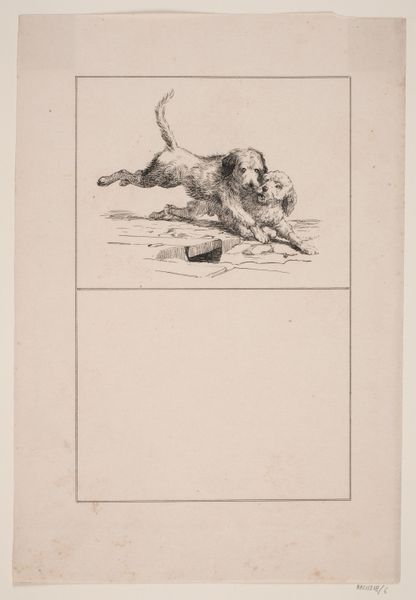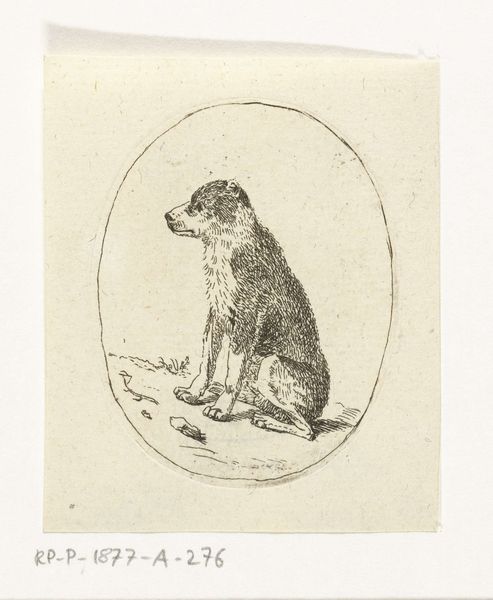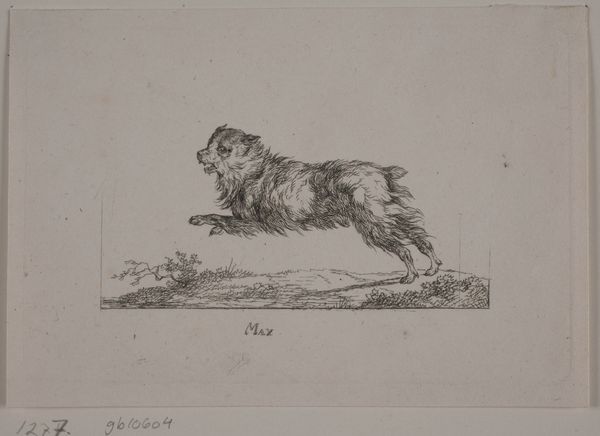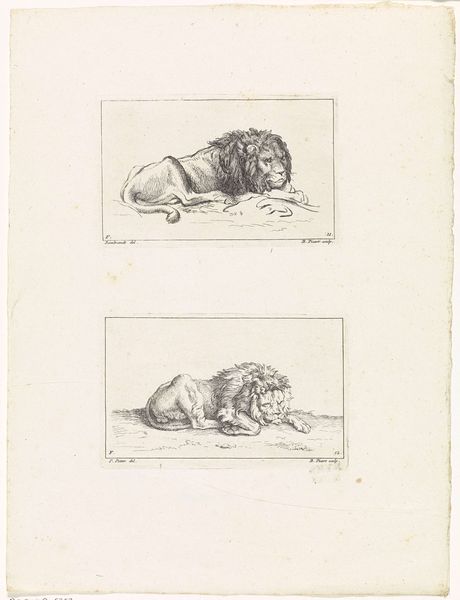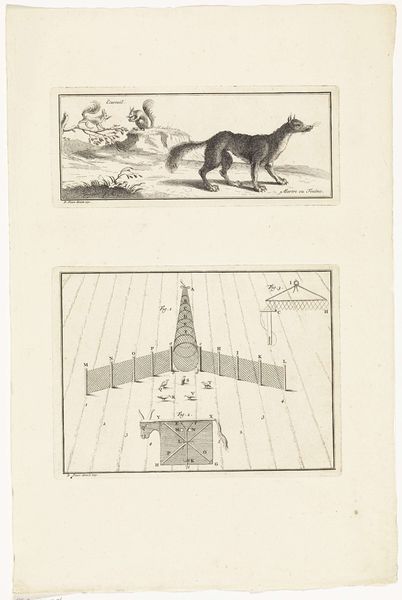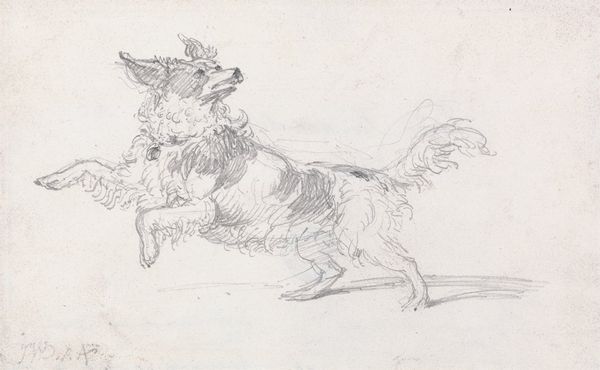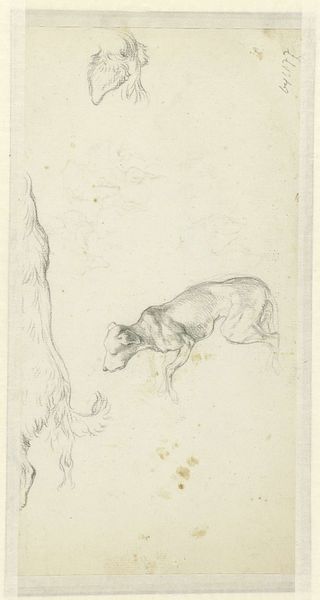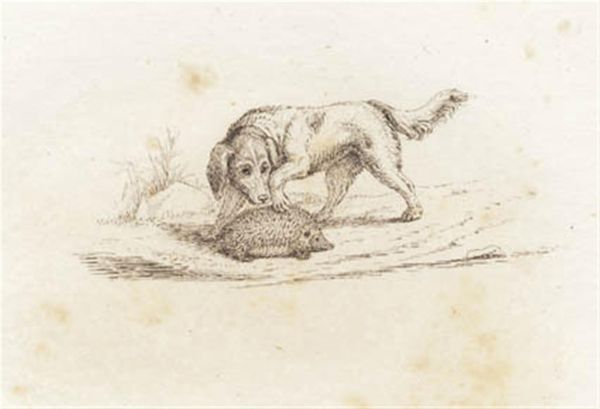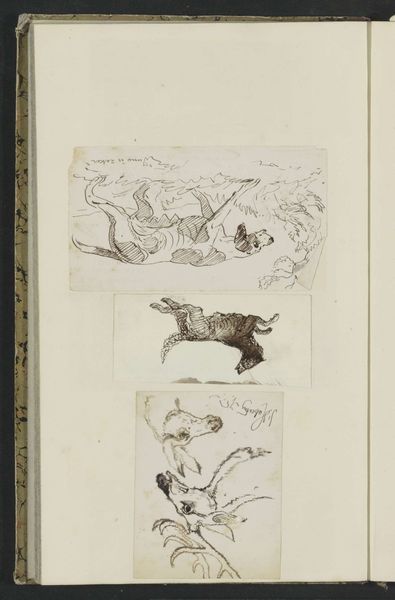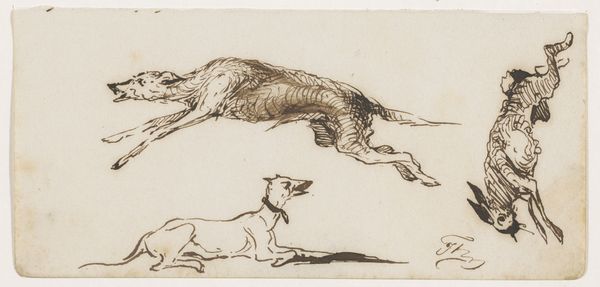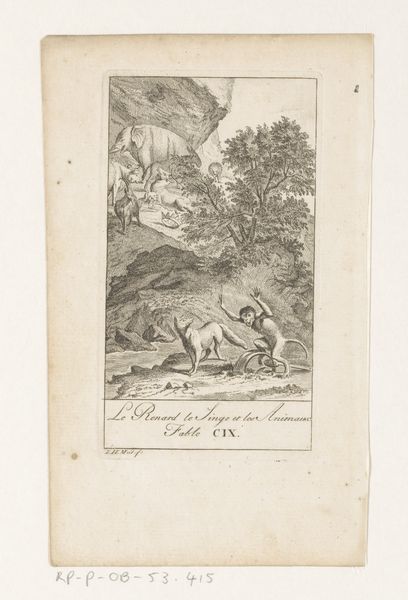
drawing, print, etching, ink
#
portrait
#
drawing
#
animal
# print
#
etching
#
dog
#
landscape
#
etching
#
ink
Dimensions: height 112 mm, width 77 mm
Copyright: Rijks Museum: Open Domain
Curator: We’re looking at Guillaume Anne van der Brugghen's print "Hondekop en hond in landschap" from around 1856, an etching in ink featuring two studies of dogs. Editor: Immediately, the texture leaps out—all those tiny, wiry lines. It creates a rough, almost folksy feel despite being a formal study. Curator: Van der Brugghen's positioning within the Dutch landscape tradition, often concerned with representations of class and labour, comes into play here, I think. The dog wasn’t just a pet; it had societal and working functions tied to hunting. How does this piece speak to those historical relationships, specifically in regards to Dutch nationalism at the time? Editor: I see your point, but focusing on the visual language, the use of etching makes me think of the bestiary tradition, these compendiums of animals, real and imagined, that taught moral lessons. Even in a straightforward portrait, a dog embodies loyalty, vigilance, and protection, especially given their presence in religious artworks to show guidance and trust, right? Curator: But whose values are those? Landowners who utilized the hunt as a means to claim access to and domination over land. We must interrogate these notions of “loyalty,” and what societal structures they uphold. The breed, the collar, and even the landscapes these dogs occupy point towards themes of class, status, and ownership. Editor: Still, you cannot deny that dogs hold deep symbolic and emotional currency. Even now they trigger this very elemental feeling within us and across centuries; their representation conjures empathy. That close portrait captures something really specific. Curator: And who had the economic ability and opportunity to be documented, ennobling and representing certain breeds over others, I always ask! Editor: That is important to remember, how artistic interpretation of the subject can play into social narrative. Looking at this print has helped to further highlight the multiple ways in which the symbolic interpretations interact and play within historical context.
Comments
No comments
Be the first to comment and join the conversation on the ultimate creative platform.
